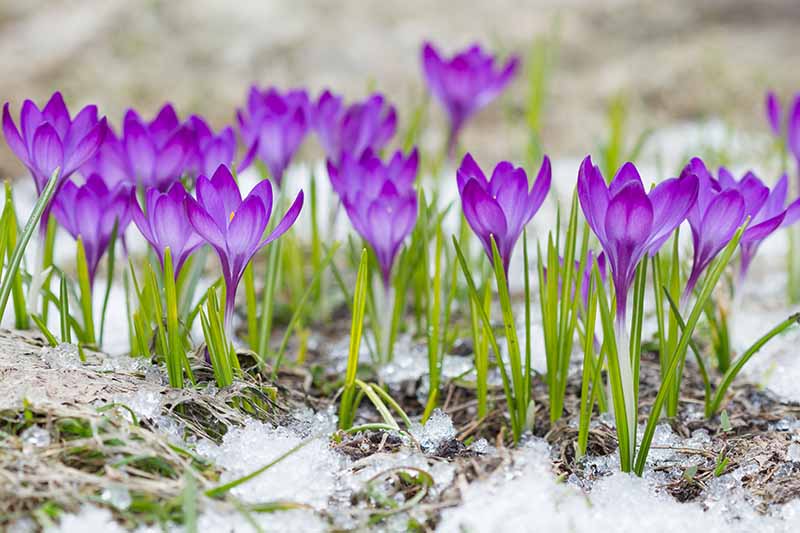Planting, growing, and caring for crocuses is a delightful way to welcome the arrival of spring with their vibrant blooms. Planting, Growing, Seeds and Caring for Crocuses

1. Selecting Crocus Seeds:
- Choose high-quality crocus seeds from a reputable supplier or collect seeds from existing crocus plants in your garden.
- Look for fresh, viable seeds that are plump and free from damage or signs of mold.
2. Choosing a Planting Location:
- Select a sunny to partially shaded location with well-drained soil.
- Ensure that the soil is loose, friable, and free from debris to facilitate seed germination and root development.
3. Planting Crocus Seeds:
- Plant crocus seeds in the fall, ideally around 6 to 8 weeks before the first frost date, allowing them time to establish roots before winter.
- Prepare the planting area by loosening the soil to a depth of 6 to 8 inches (15 to 20 cm) and incorporating organic matter such as compost.
- Scatter the crocus seeds evenly over the prepared soil surface, gently pressing them into the soil with your fingers.
- Cover the seeds with a thin layer of soil or mulch to protect them and help retain moisture.
4. Caring for Crocus Seedlings:
- Keep the soil consistently moist but not waterlogged during the germination and seedling stage.
- Thin out seedlings if they become overcrowded, allowing sufficient space for healthy growth.
- Once the seedlings have established a few sets of true leaves, apply a balanced liquid fertilizer according to the manufacturer’s instructions to promote healthy growth.
5. Caring for Mature Crocus Plants:
- Water mature crocus plants regularly during the growing season, aiming to keep the soil evenly moist.
- Apply a layer of organic mulch around the base of the plants to help retain soil moisture and suppress weeds.
- Deadhead spent flowers promptly to encourage continuous blooming and prevent seed formation.
- Allow the foliage to yellow and wither naturally after flowering, as this signals that the plants are entering dormancy and storing energy for next year’s growth.
6. Dealing with Pests and Diseases:
- Monitor crocus plants for common pests such as aphids, thrips, and bulb flies, and take appropriate measures to control infestations.
- Prevent fungal diseases such as botrytis by providing good air circulation around the plants and avoiding overhead watering.
By following these steps and providing proper care, you can enjoy the charming blooms of crocuses in your garden, adding color and beauty to your landscape in the early spring months. Crocuses are relatively low-maintenance plants that reward gardeners with their cheerful flowers and resilience.
fastnews Crocuses flower in hindi fastnews Crocuses in hindi fastnews Crocuses flower in hindi fastnews Crocuses in hindi







